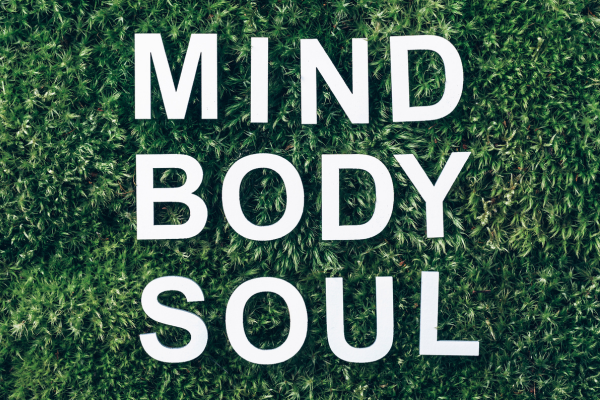
For millennia, humanity has grappled with the enigmatic question of our existence. Are we merely fleeting collections of thoughts and emotions, or is there a deeper essence that binds our mind and body? This very question, the mind-body dilemma, has captivated philosophers, healers, and everyday individuals for centuries.
Thankfully, the field of mind and body therapy offers a resounding answer, a resonant chord echoing through the ages.
We are not isolated entities, but rather intricate tapestries woven from the threads of mind, body, and spirit. True health, a state of vibrant well-being, isn’t just about the absence of disease. It’s a symphony where the mind acts as the conductor, orchestrating the intricate instruments of our physical systems. When the conductor is stressed or out of tune, the music suffers.
Conversely, physical ailments can throw the entire symphony into disarray. Mind and body therapy offers a path to cultivate harmony within this complex system, a journey of rediscovering the wholeness that lies within each of us.
Imagine a vibrant tapestry, its threads a kaleidoscope of colors and textures. One section of the tapestry might depict a vibrant flower, its petals bursting with life. Yet, hidden beneath the surface might lie a tear, a subtle imperfection. This tear, though seemingly insignificant, can weaken the entire tapestry.
Similarly, our minds and bodies are intricately interwoven.
While we might experience a symptom in our physical form, such as headaches or chronic pain, the root cause might lie in the realm of our thoughts and emotions, perhaps unmanaged stress or unresolved anxieties.
Mind and body therapy acknowledges this interconnectedness. It delves beyond the limitations of a purely physical or psychological approach, offering a holistic perspective on health and well-being.
What is the Mind Body Therapy Approach?
Mind and body therapy, also known as holistic therapy or integrative medicine, embraces the interconnectedness of mind, body, and spirit.
It departs from the traditional model of healthcare, which often views the body as a machine with separate parts to be fixed. Instead, mind and body therapy recognizes the reciprocal relationship between our thoughts, emotions, behaviors, and physical health.
Think of it like a symphony. The mind is the conductor, orchestrating the various instruments (organs and systems) of the body. When the conductor is stressed or out of tune, the music suffers. Conversely, physical ailments can throw the entire symphony into disarray.
Mind and body therapy aims to create harmony within this complex system.
What is the Treatment of Mind and Body?
Mind and body therapies encompass a diverse range of practices, each with its own unique approach to promoting holistic well-being. Here are some prominent examples:
- Meditation and Mindfulness: Mindfulness practices, such as meditation, yoga Nidra, and breathwork, train your attention to focus on the present moment without judgment. These techniques can reduce stress, anxiety, and pain, while promoting relaxation and emotional awareness.
- Acupuncture: This ancient Chinese practice involves inserting thin needles into specific points on the body to stimulate energy flow (qi). Acupuncture is used to treat a variety of conditions, including chronic pain, headaches, anxiety, and nausea.
- Massage Therapy: Massage therapy involves the manipulation of soft tissues to promote relaxation, relieve muscle tension, and improve circulation. It can also be beneficial for reducing stress, anxiety, and pain.
- Art Therapy: Engaging in creative expression can be a powerful tool for exploring emotions, managing stress, and improving self-awareness. Art therapy provides a safe space for individuals to express themselves nonverbally, fostering emotional exploration and healing.
- Cognitive-Behavioral Therapy (CBT): While traditionally categorized as a psychotherapy, CBT can be considered a mind and body therapy when combined with mindfulness practices or somatic (body-focused) techniques. CBT helps individuals identify and change negative thought patterns that contribute to emotional and physical distress.
What is Mind and Body Healing Therapy?
Unlike the allure of a quick fix or a magic bullet, mind and body healing therapy offers a profound journey of self-discovery. It’s a hero’s quest, not outward into fantastical landscapes, but inward towards the hidden chambers of your own being.
This journey is about cultivating a deeper understanding of your unique mind-body connection, learning to listen to the whispers of your body, and ultimately, becoming the architect of your own well-being.
One of the most transformative aspects of mind and body healing therapy is the development of a deeper body awareness. Throughout our lives, we often become disconnected from the subtle signals our bodies send us.
Stress might manifest as a knot in our shoulders, while anxiety can trigger digestive issues.
Mind and body therapy teaches us to become detectives, deciphering the language of our bodies and identifying the mind-body connections that influence our health.
Through techniques like mindfulness meditation and body scan exercises, we learn to pay attention to physical sensations without judgment, fostering a deeper understanding of how our thoughts, emotions, and physical experiences are intricately woven.
Mind and body therapy empowers us to take charge of our overall well-being.
Imagine gaining the knowledge to identify the emotional triggers that lead to your headaches, or understanding how chronic stress manifests as fatigue.
This newfound awareness equips you with the tools to manage these challenges proactively. Perhaps you discover that mindful breathing exercises can help alleviate anxiety, or that incorporating gentle yoga stretches into your daily routine reduces muscle tension.
The journey of mind and body healing therapy is a lifelong exploration. It’s about cultivating a sense of self-compassion, celebrating your unique strengths, and learning to navigate the inevitable challenges that life throws your way.
The ultimate goal is not to achieve a state of perfect health, but rather to foster a sense of vibrant well-being, a state where your mind, body, and spirit are working in harmony, creating a symphony of life that resonates with inner peace and joy.
Which is an Example of a Mind and Body Intervention?
Imagine someone experiencing chronic headaches. A traditional approach might solely focus on pain medication. However, a mind and body approach would consider the potential psychological triggers for the headaches. Perhaps the individual holds a lot of stress in their neck and shoulders, or experiences anxiety-related tension headaches.
In this scenario, a mind and body therapist might recommend a combination of treatments:
- Massage therapy: to target muscle tension and promote relaxation.
- Cognitive-behavioral therapy: to learn relaxation techniques and identify stress triggers.
- Mindfulness meditation: to cultivate greater awareness of the mind-body connection and manage stress.
By addressing both the physical and psychological aspects of the headaches, the individual can experience a more holistic and sustainable path to healing.
In Conclusion
Mind and body therapy offers a powerful approach to achieving optimal well-being.
This integrative approach goes beyond treating symptoms; it empowers us to take an active role in fostering a healthy mind, body, and spirit.
Whether you’re seeking stress reduction, pain management, or improved emotional well-being, mind and body therapy offers a diverse toolbox of techniques to help you create a healthier and more fulfilling life.
Remember, the journey towards holistic wellness is unique to each individual. Explore different mind and body techniques, find what resonates with you, and be patient with yourself.
By listening to your body and mind, and embracing the interconnectedness of your being, you can create a harmonious symphony of well-being.

Q&A on Mind and Body Therapy
A deep dive, easy to read, review of
A Journey Through Mind and Body Therapy
What is the treatment of mind and body?
The treatment of mind and body, often referred to as Mind and Body Therapy, is a holistic approach that seeks to address health and wellness by recognizing the intrinsic connection between the psychological and physiological aspects of an individual. This treatment methodology incorporates various practices like mindfulness, meditation, yoga, deep breathing exercises, and biofeedback to promote healing and improve mental health. Mind and Body Therapy aims to reduce stress, alleviate physical discomfort, enhance emotional balance, and foster a deeper sense of self-awareness and inner peace.
What does mind and body healing involve?
Mind and body healing involves a comprehensive approach that integrates techniques and practices focused on enhancing the mind-body connection. Key components include mindfulness meditation, which cultivates present-moment awareness; yoga, which combines physical postures, breathing techniques, and meditation to balance the body and mind; and cognitive-behavioral strategies that address thought patterns affecting physical health. This holistic healing process is designed to empower individuals to influence their own health positively, addressing both mental and physical ailments through self-awareness and self-regulation techniques.
What are the limitations of mind body therapy?
While Mind and Body Therapy offers numerous benefits, it also has limitations. One major limitation is that it may not be sufficient as a standalone treatment for severe or acute medical conditions that require conventional medical interventions. Additionally, the effectiveness of Mind and Body Therapy can vary greatly among individuals, depending on personal beliefs, the severity of symptoms, and the specific practices employed. Accessibility and familiarity with holistic practices can also pose challenges for some individuals. It’s important for practitioners to tailor approaches to individual needs and consider integrating mind-body practices with traditional treatments when necessary.
What is the mind body relationship in therapy?
The mind-body relationship in therapy refers to the foundational principle that the mental and physical aspects of an individual are deeply interconnected and influence each other. In the context of therapy, this relationship is harnessed to promote healing and well-being. By addressing mental health issues through physical practices like yoga or meditation, or by acknowledging how physical health can affect mental well-being, therapists can offer a more comprehensive treatment approach. This integrative perspective supports the idea that improving physical health can lead to psychological benefits, and vice versa, leading to holistic healing and enhanced quality of life.
